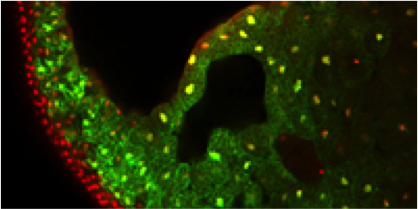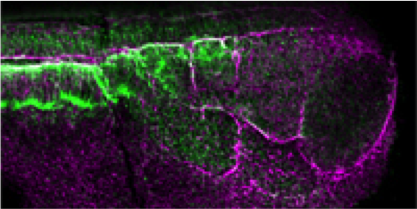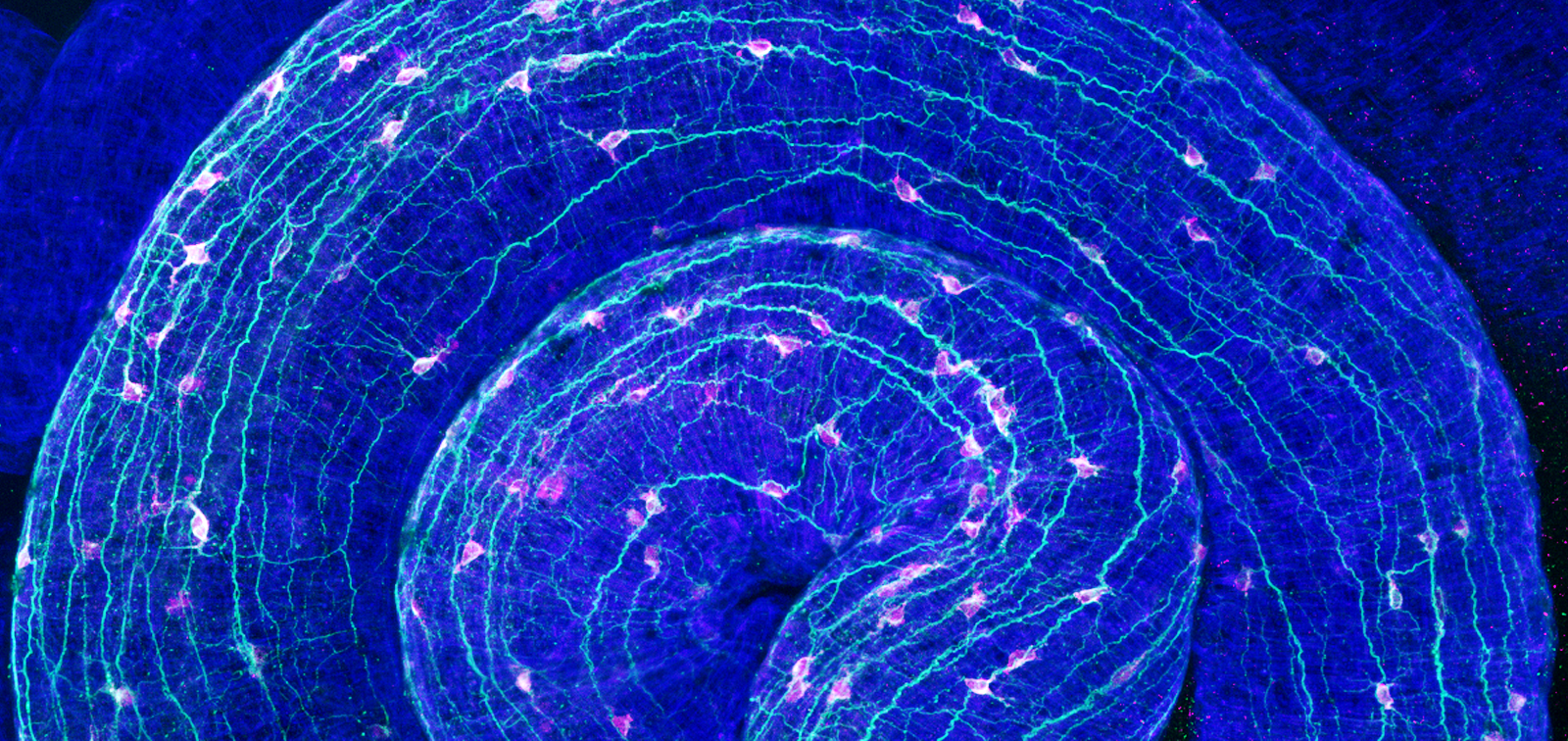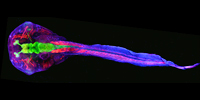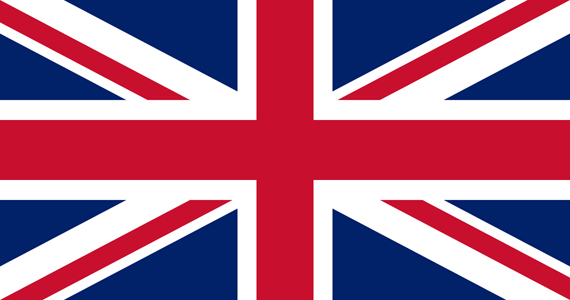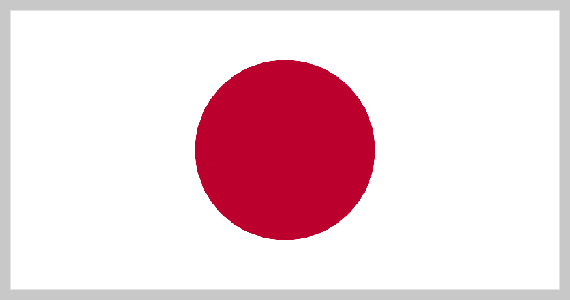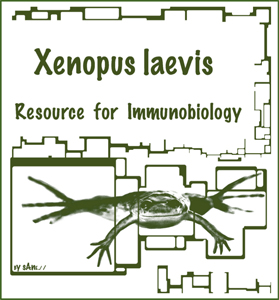Xenopus is an essential vertebrate model system for biomedical research
- Share 83% human disease genes
- Ease of genomic manipulation
- Large eggs and embryos with rapid external development
- Ease of housing
- Produce hardy eggs year-round
- Learn more about Xenopus



The African clawed frog, Xenopus laevis [Pipidae], is endemic to the African Rift Valley and southern Africa with introduced populations in Europe, Asia and North America. It is a large, fully aquatic species with a flattened appearance and pronounced sexual dimorphism; Males are generally smaller (4.5-10cm) than females (6-15cm). The forelimbs are held extended, while hindlimbs are large muscular with fully webbed toes. Both hands and feet have distinct black toe tips resembling claws. Adults have dorsal skin patterns of blotchy green, gray and brown with lighter colored bellies, while albino varieties are also common in captivity. It is the most widely used Xenopus species in biomedical research, with a long history of use in embryology, cell biology and developmental biology. The genome of X. laevis, sequenced in 2016, is allotetraploid due to a hybridization event that occurred 17–18 MYA between two extinct diploid ancestors. X. laevis thus carries 2 subgenomes, referred to as the ‘Long’ and ‘Short’ chromosomes. We assign a ‘.L’ or ‘.S’ suffix respectively to gene symbols to indicate to which ancestral genome they belong. It is estimated that X. tropicalis and X. laevis, diverged approximately 48 MYA. The X. laevis genome annotation v10.1 is available on Xenbase and other resources.

The genome of N. parkeri was sequenced in 2015 and has current assembly v1.0 available on Xenbase via these links below:
JBrowse, BLAST, Download
JBrowse, BLAST, Download

Sequenced in 2021, the axolotl genome assembly v6.0 is available on Xenbase via these links below:
JBrowse, BLAST, Download
The American bullfrog, Rana (Lithobates) catesbeianus [Ranidae], is native to Canada, Mexico and the United States, however is invasive to several countries in Europe, Asia and South America. Previously known as Rana catesbeiana, it was reassigned to the genus Lithobates in 2006 and has since been argued that Lithobates may best be considered a subgenus of the genus Rana. It is also known by its homotypic synonym as Aquarana catesbeiana.
These are the largest frogs in North America, with the larger
females growing up to 180mm in length from snout to vent. Males
have large, defining tympanums wider in diameter than the eyes.
Adults have green dorsal skin with a dark, netlike pattern on
top, however skin colour varies by region. They live and breed
in vegetation-covered shallow waters of lakes and marshes.
Bullfrogs are territorial of breeding sites and prey on any
animal smaller than themselves including other amphibians,
insects, fish, mice and crayfish. They are an important source
of food consumption and are used for pest control in certain
regions. The genome of L.
catesbeianus was sequenced in 2017 with the v2.1 assembly
currently available on Xenbase via these links below:
JBrowse, BLAST,
Download


- Search Xenopus Papers and Books on Xenbase
- Xenopus 2020 White Paper describes the research and priorities of the Xenopus biomedical community.
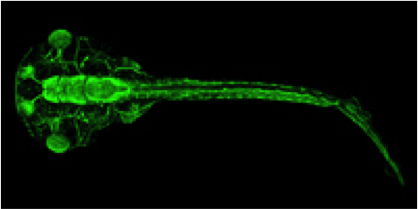

- Expression Data @ GEO
- Next-gen Sequence Data @ SRA
- X. tropicalis @ NCBI
- Xenopus Gene Collection (XGC)
- X. tropicalis BLAST @ NCBI
- PubMed Literature Search
- Nucleotide Data @ NCBI
